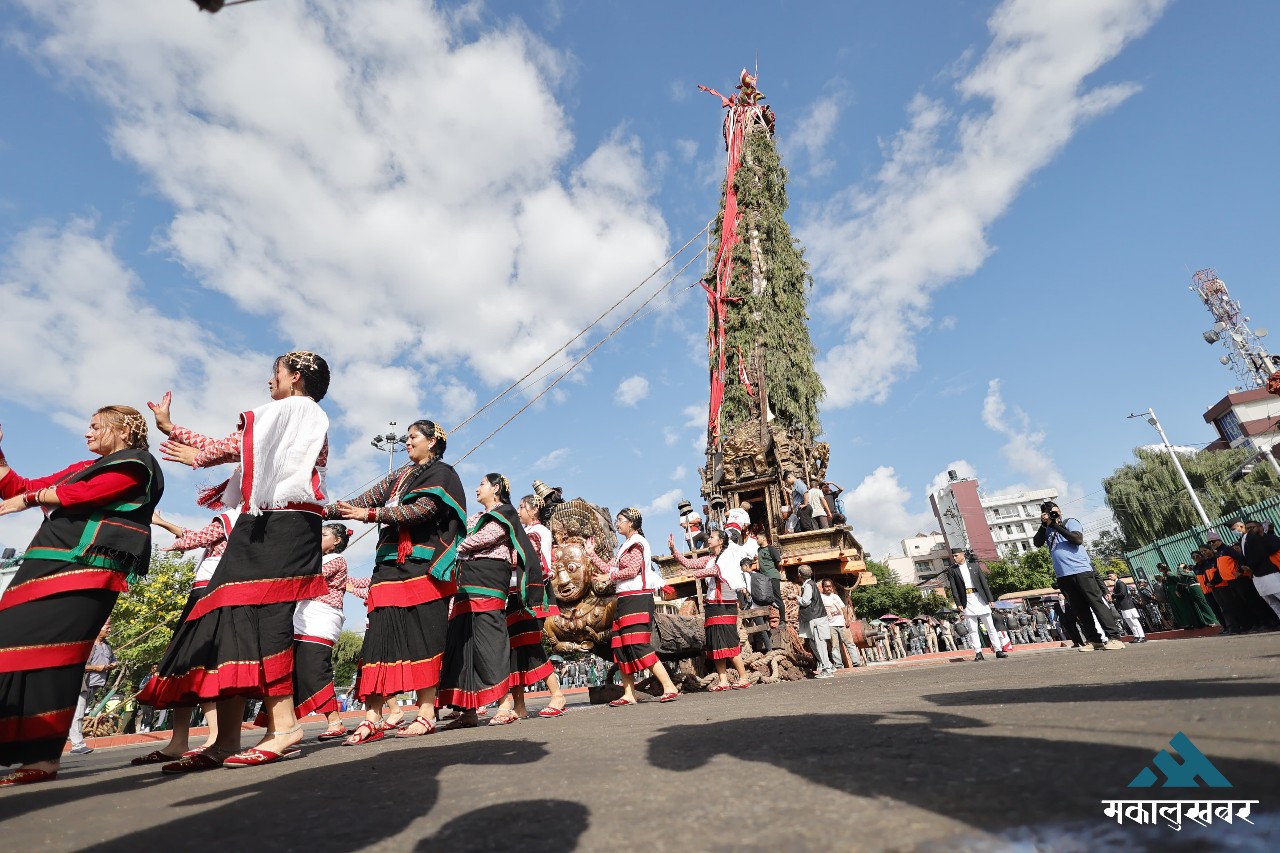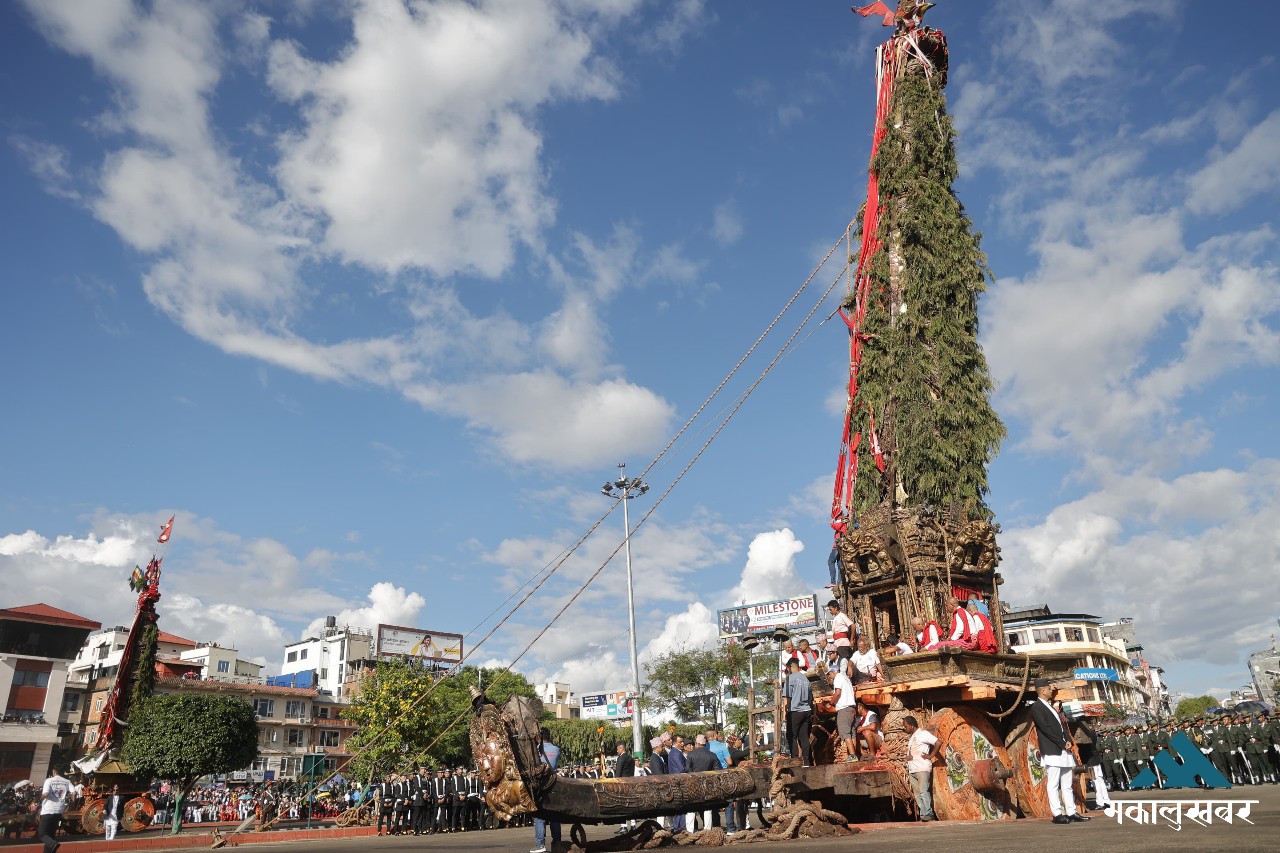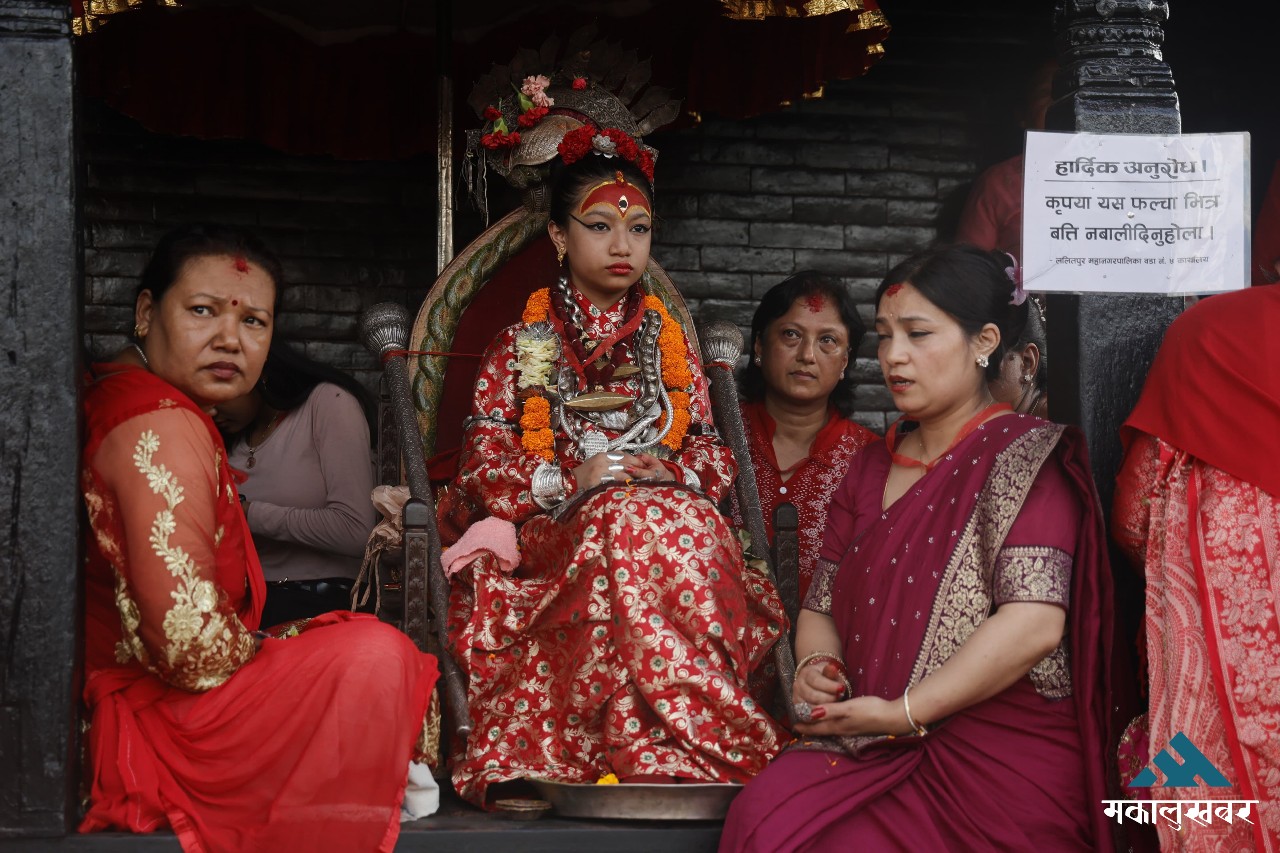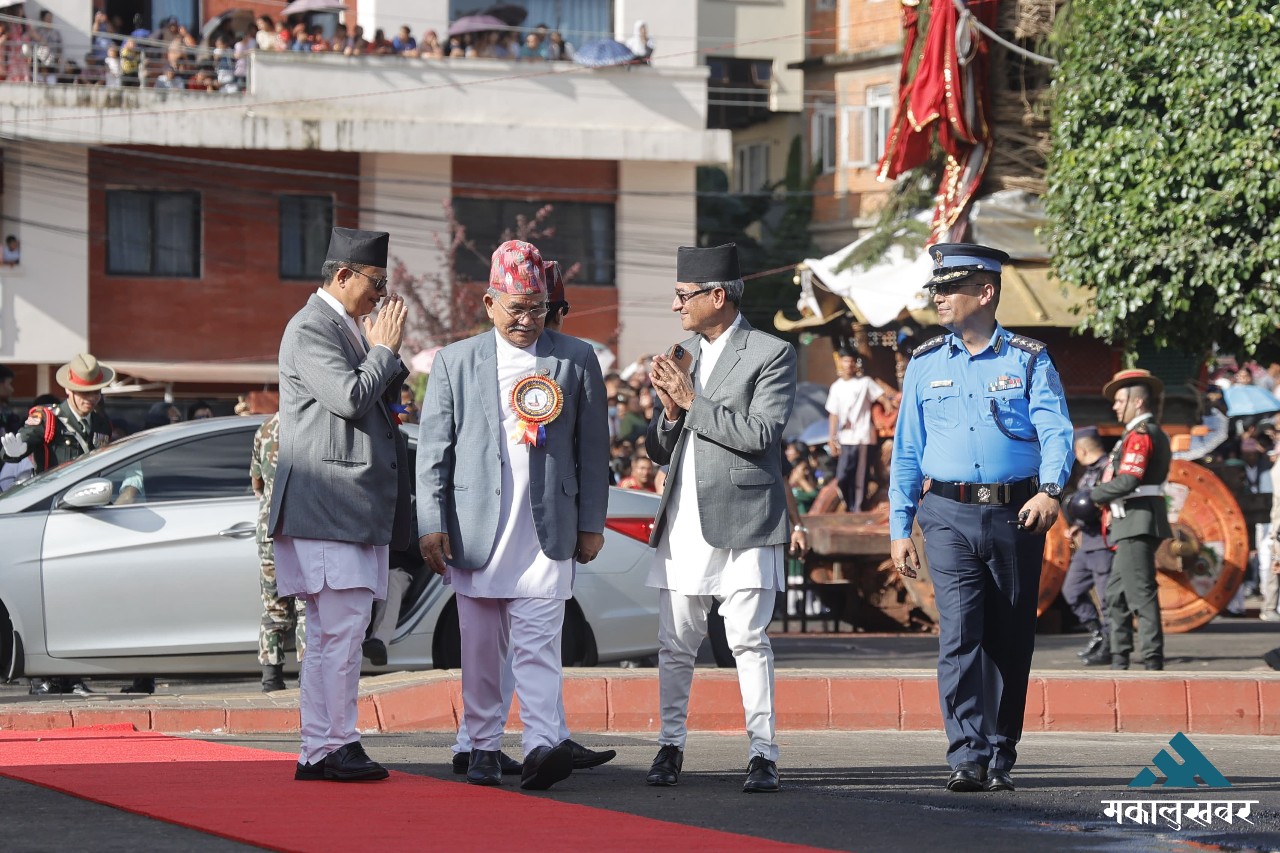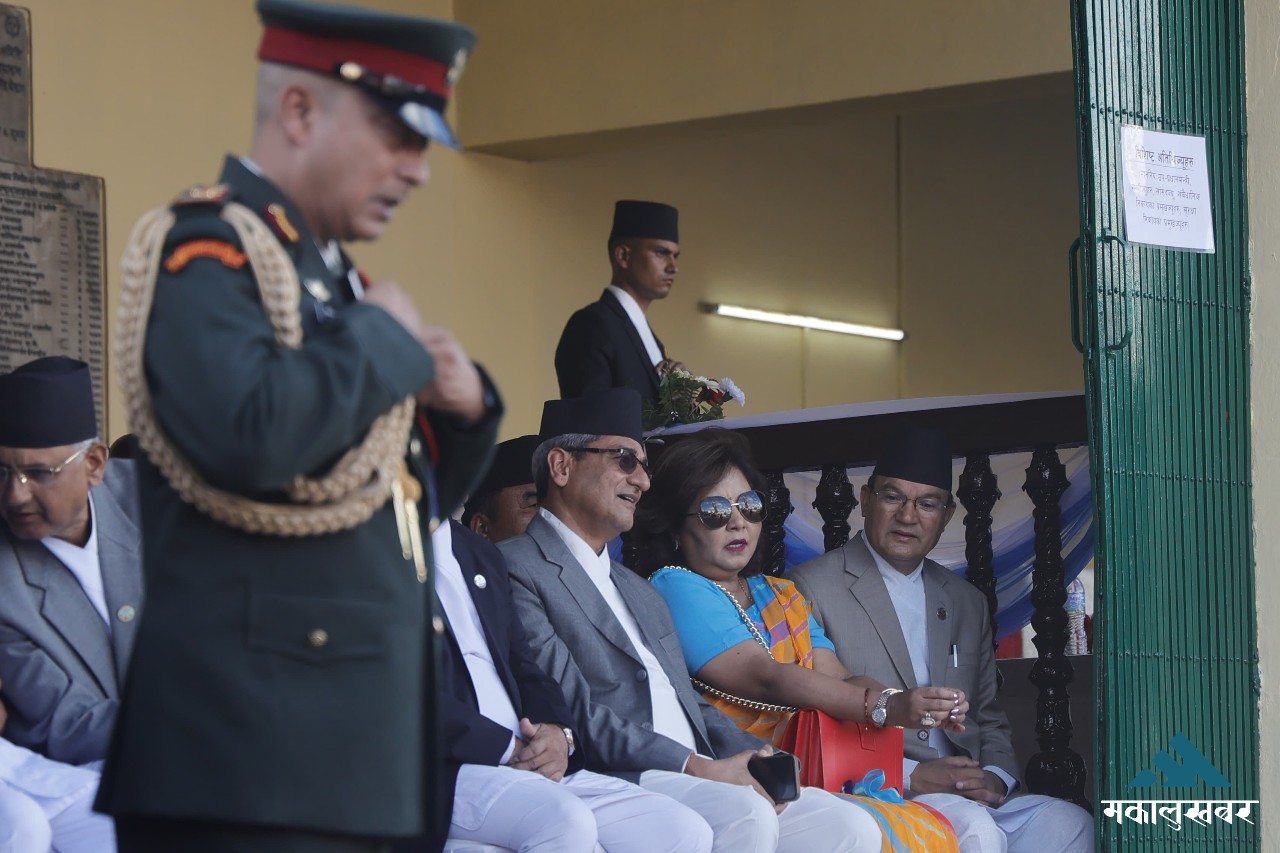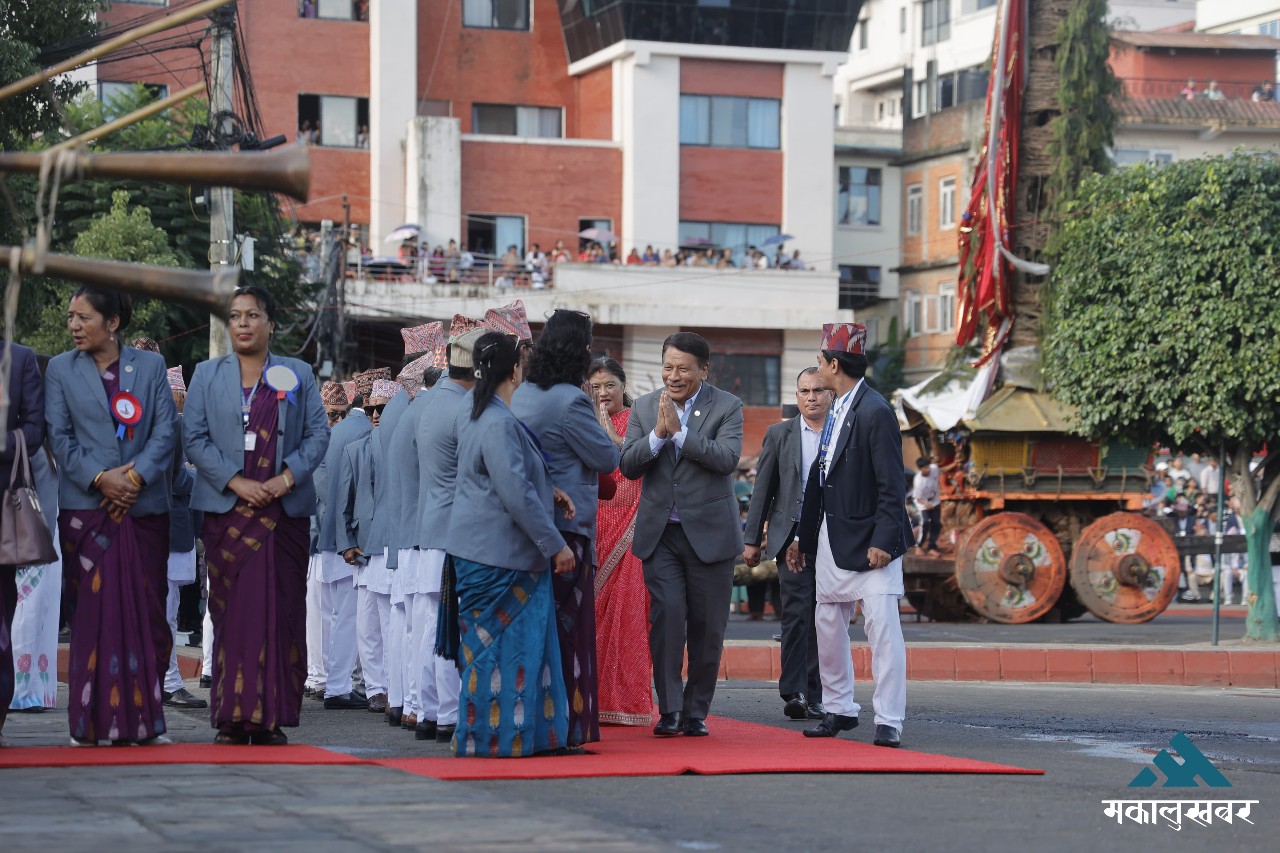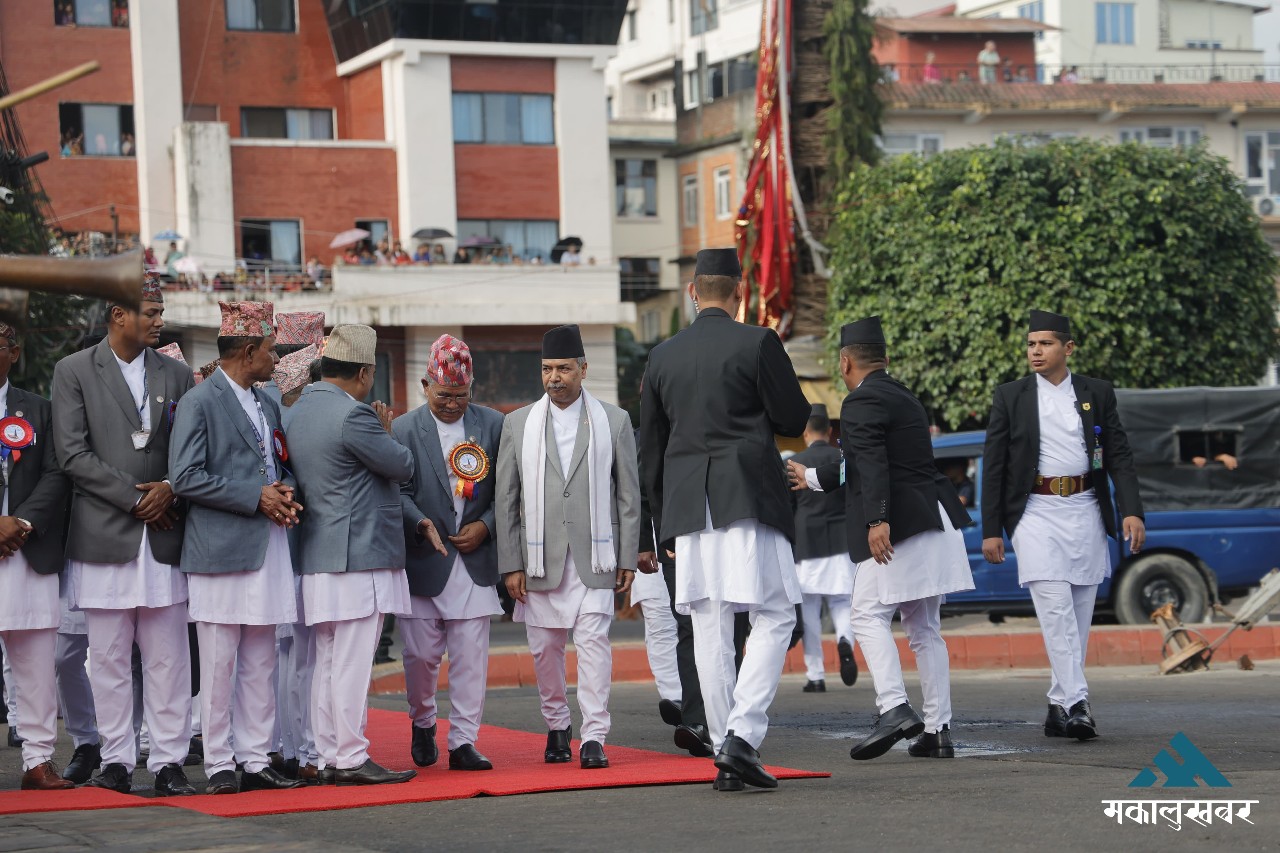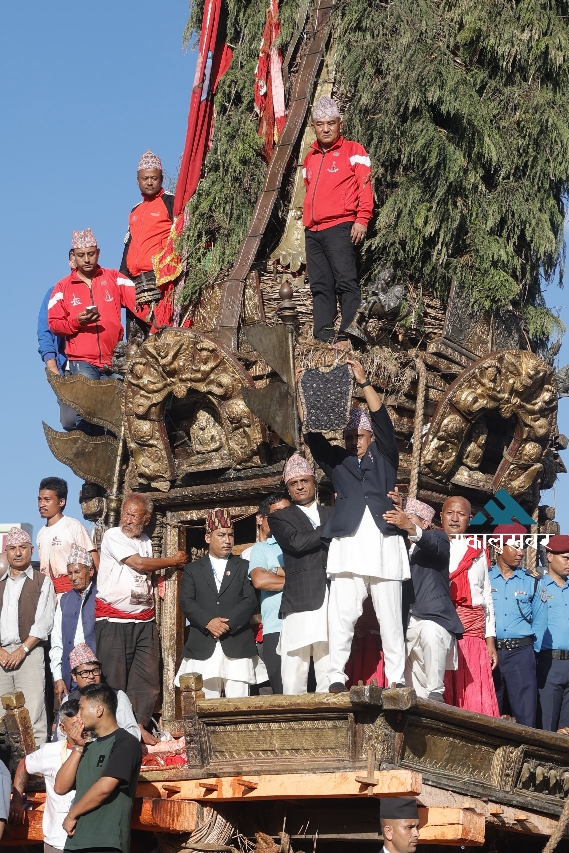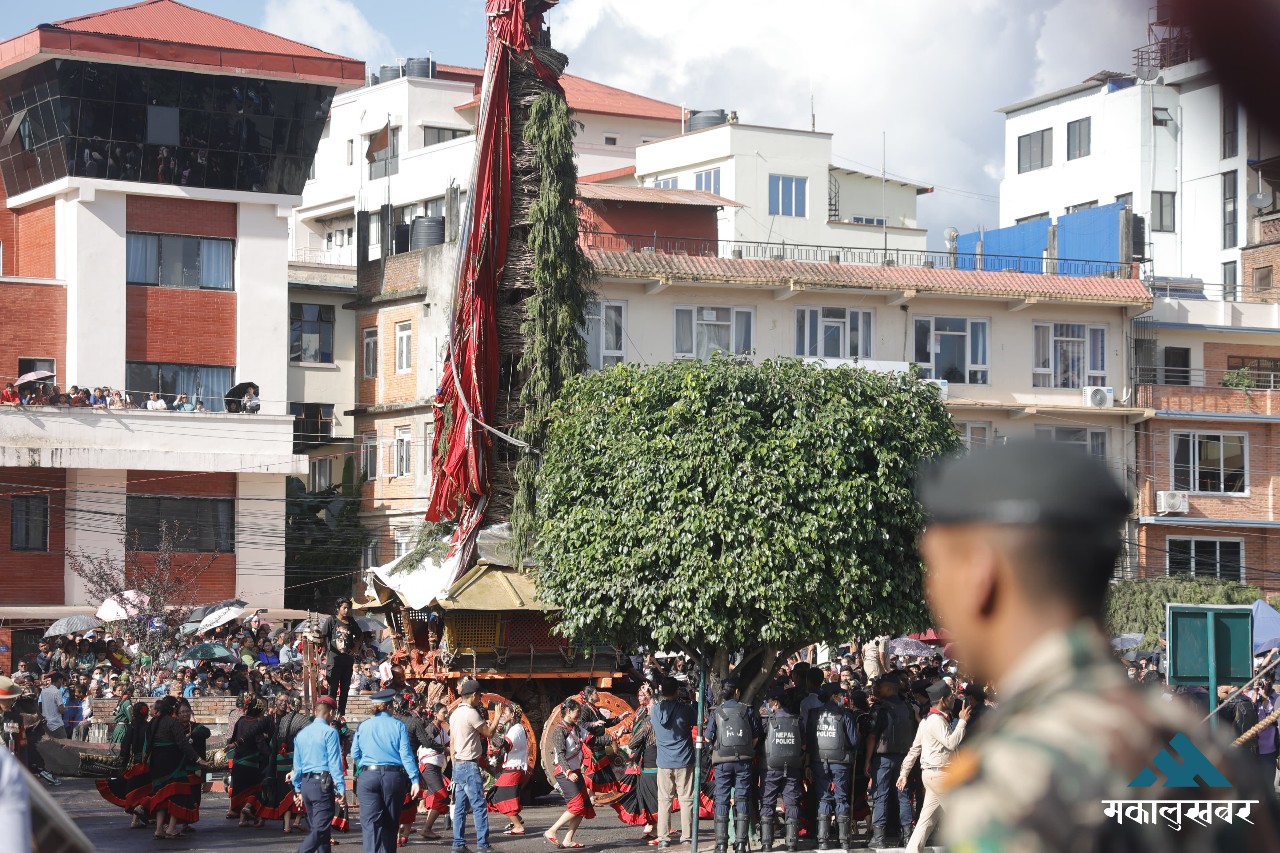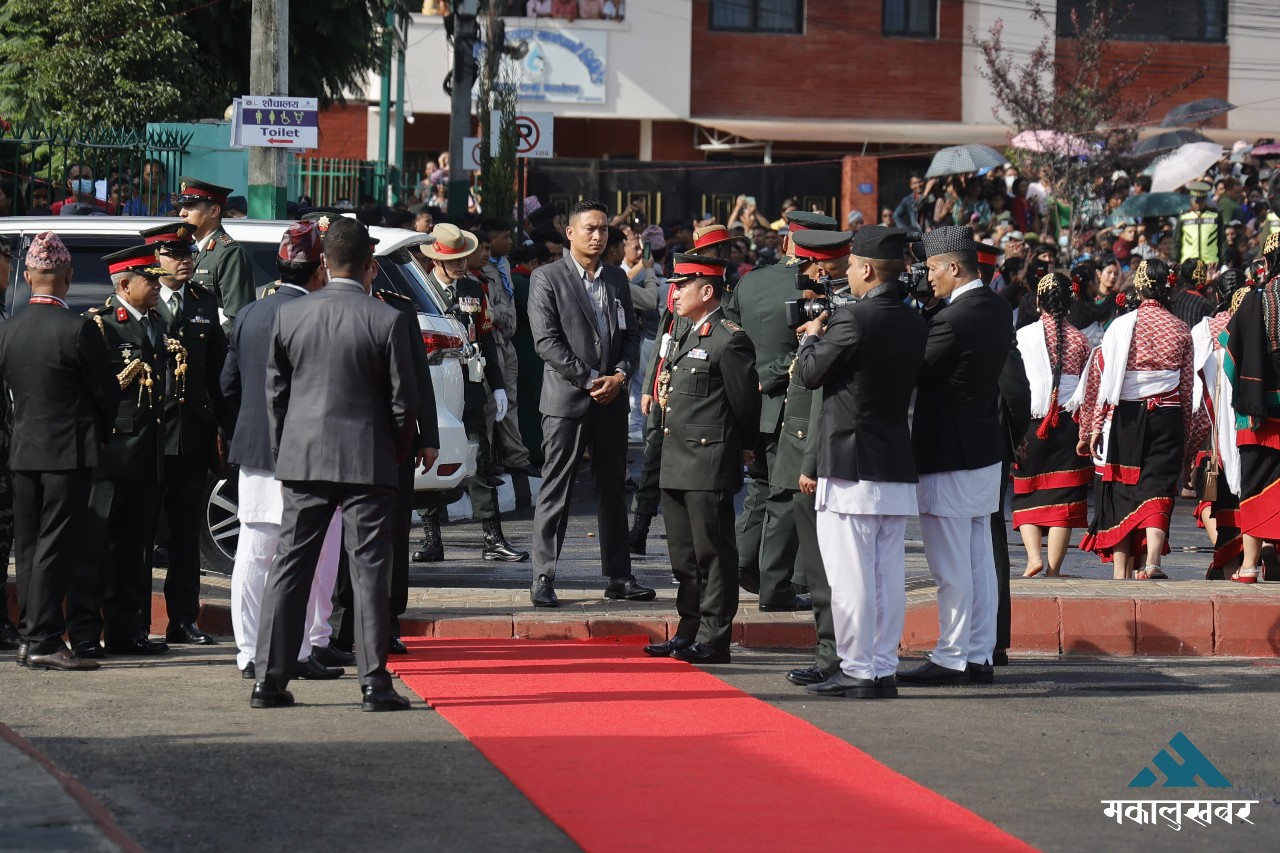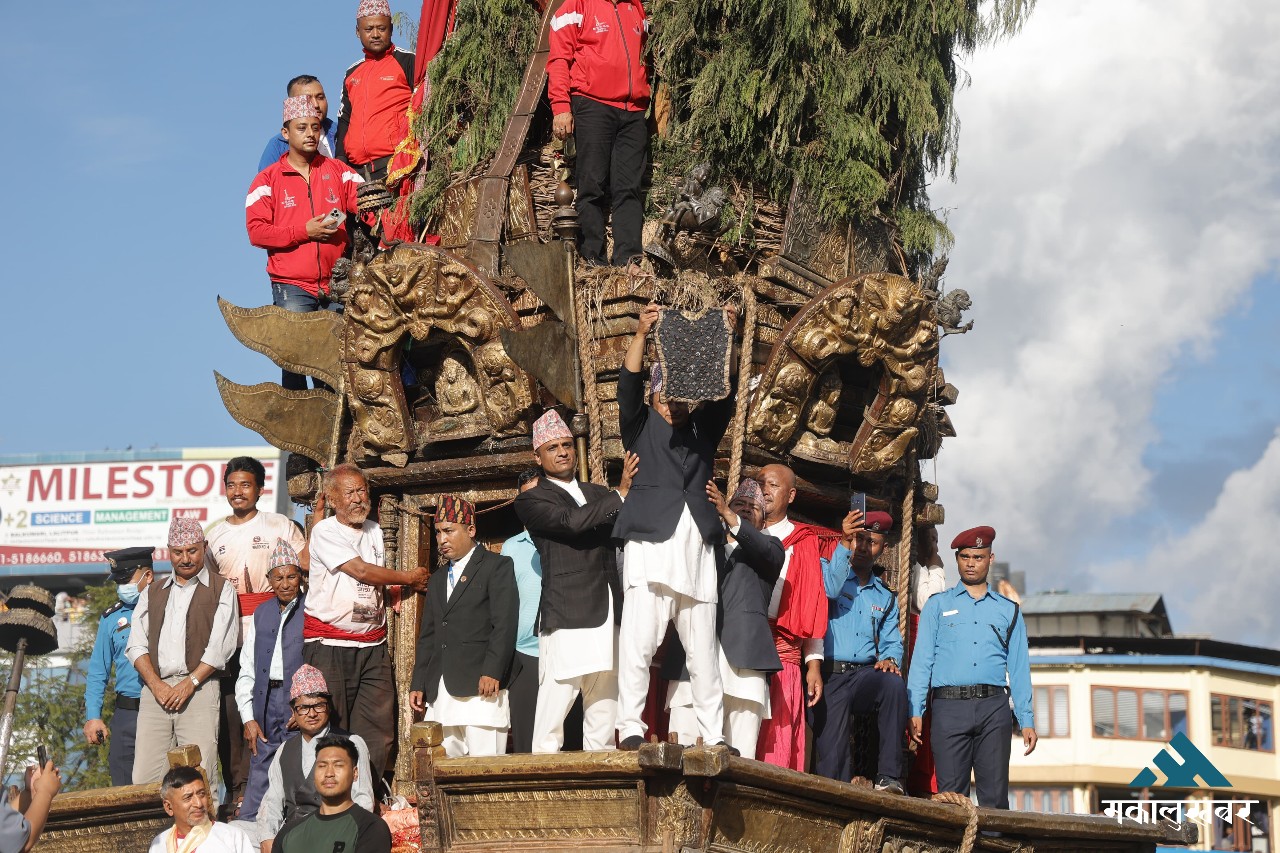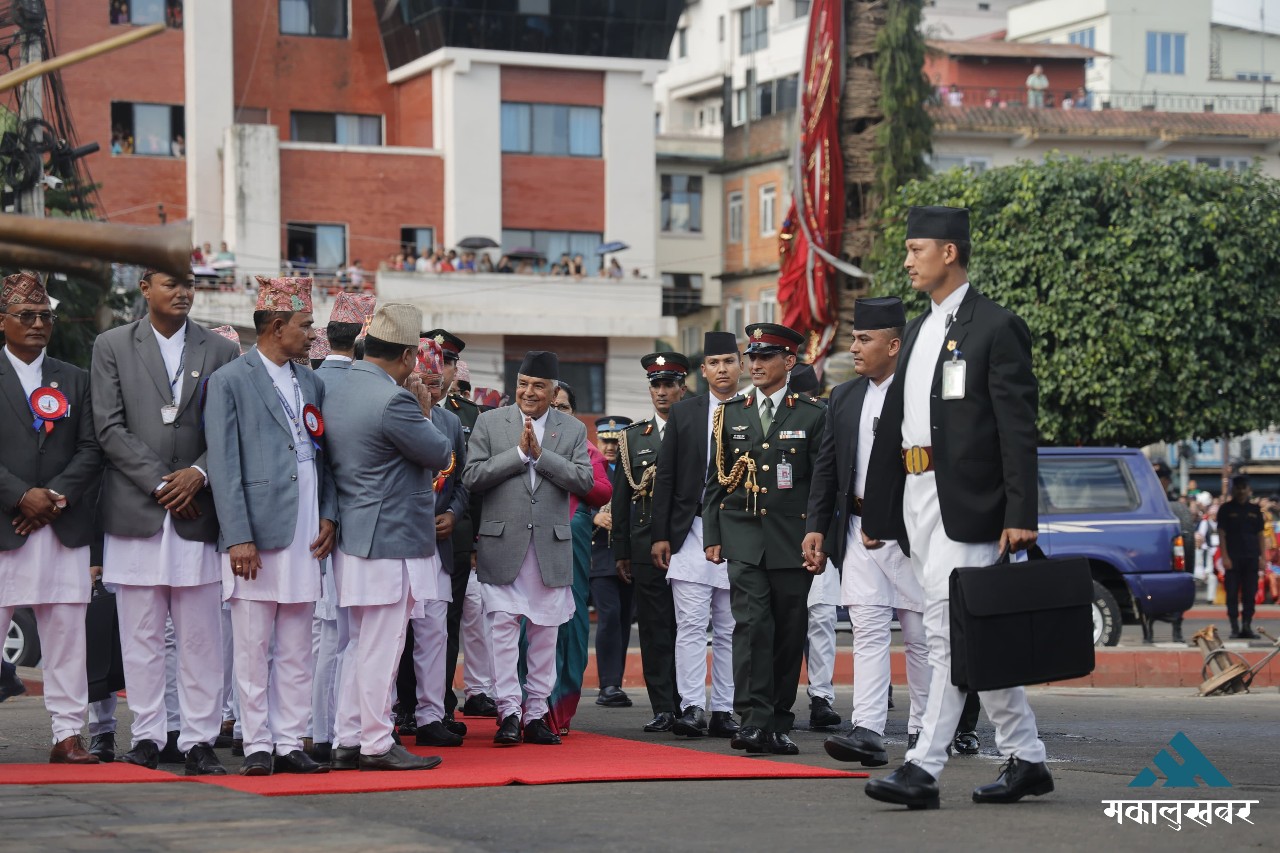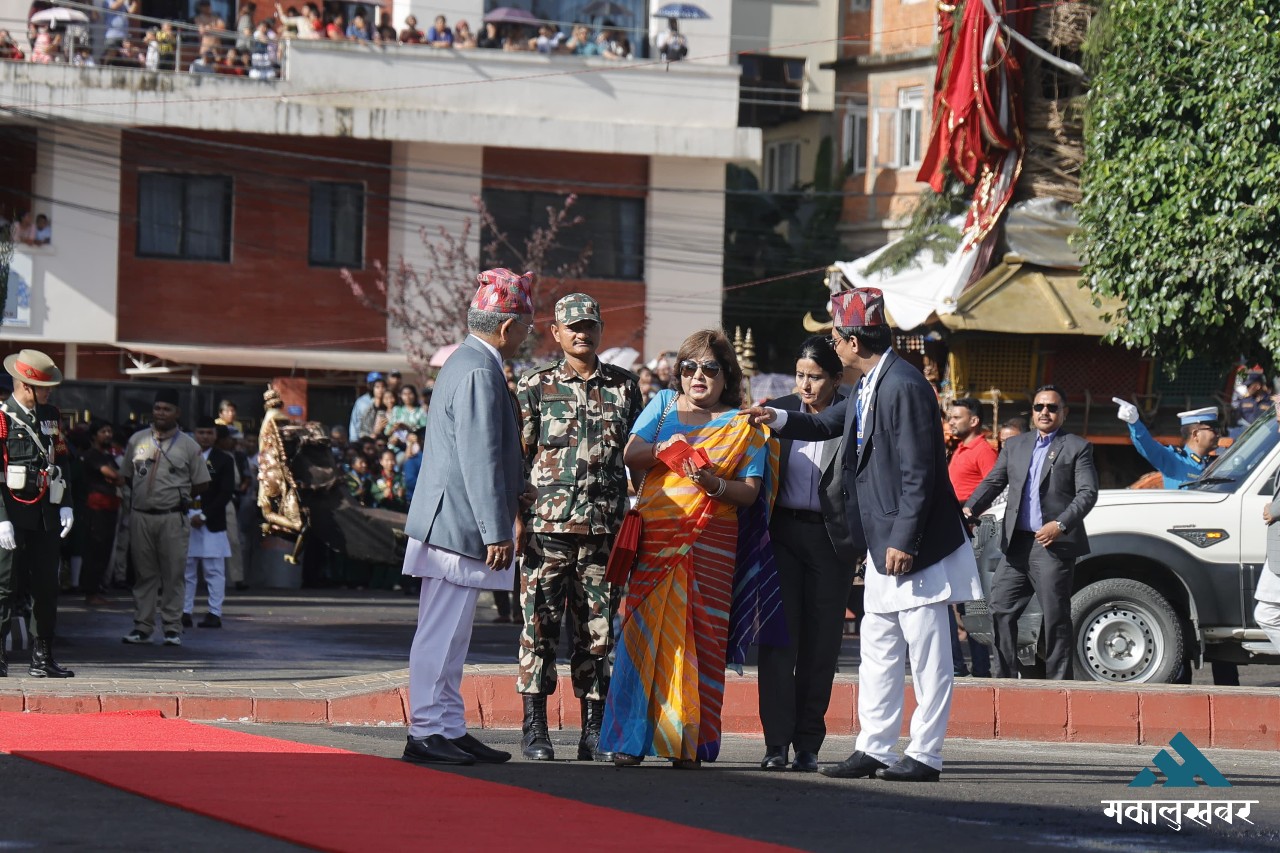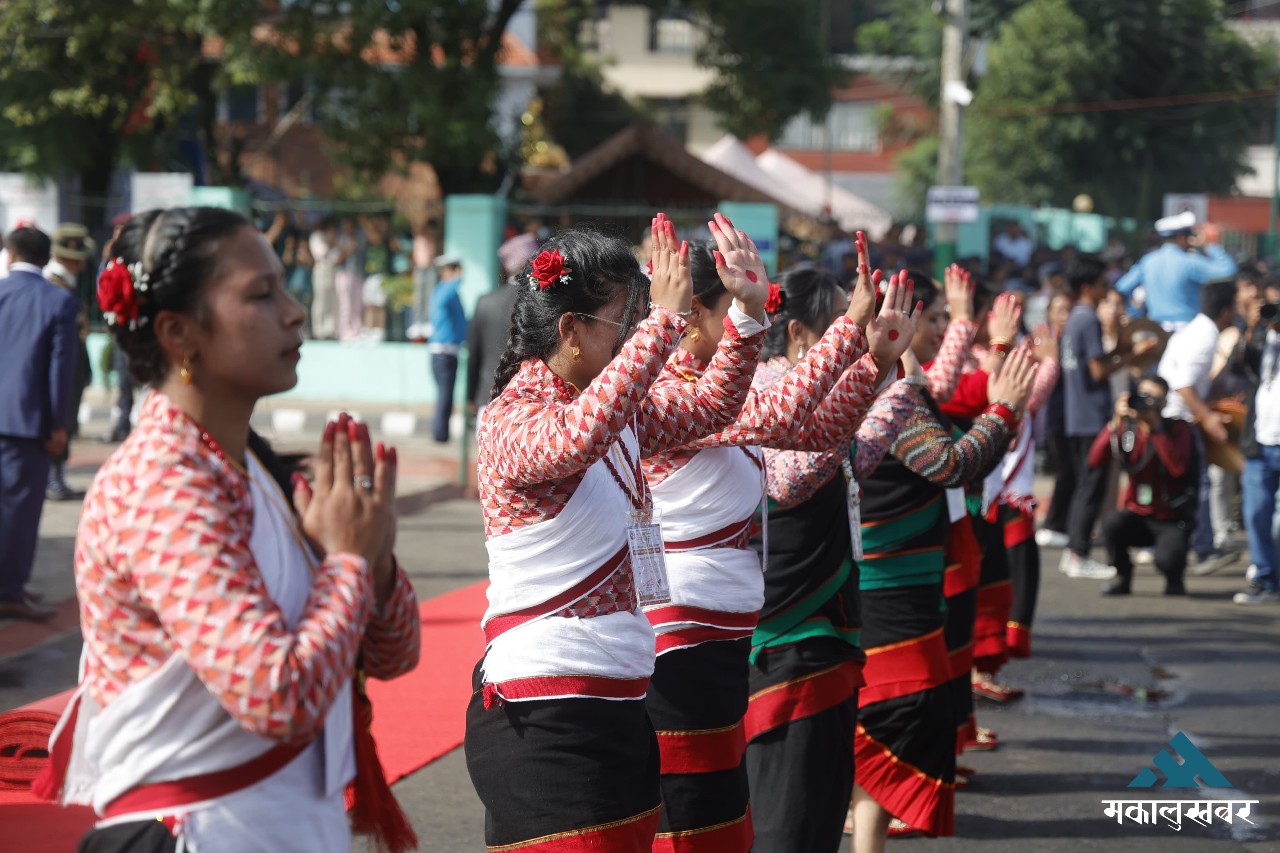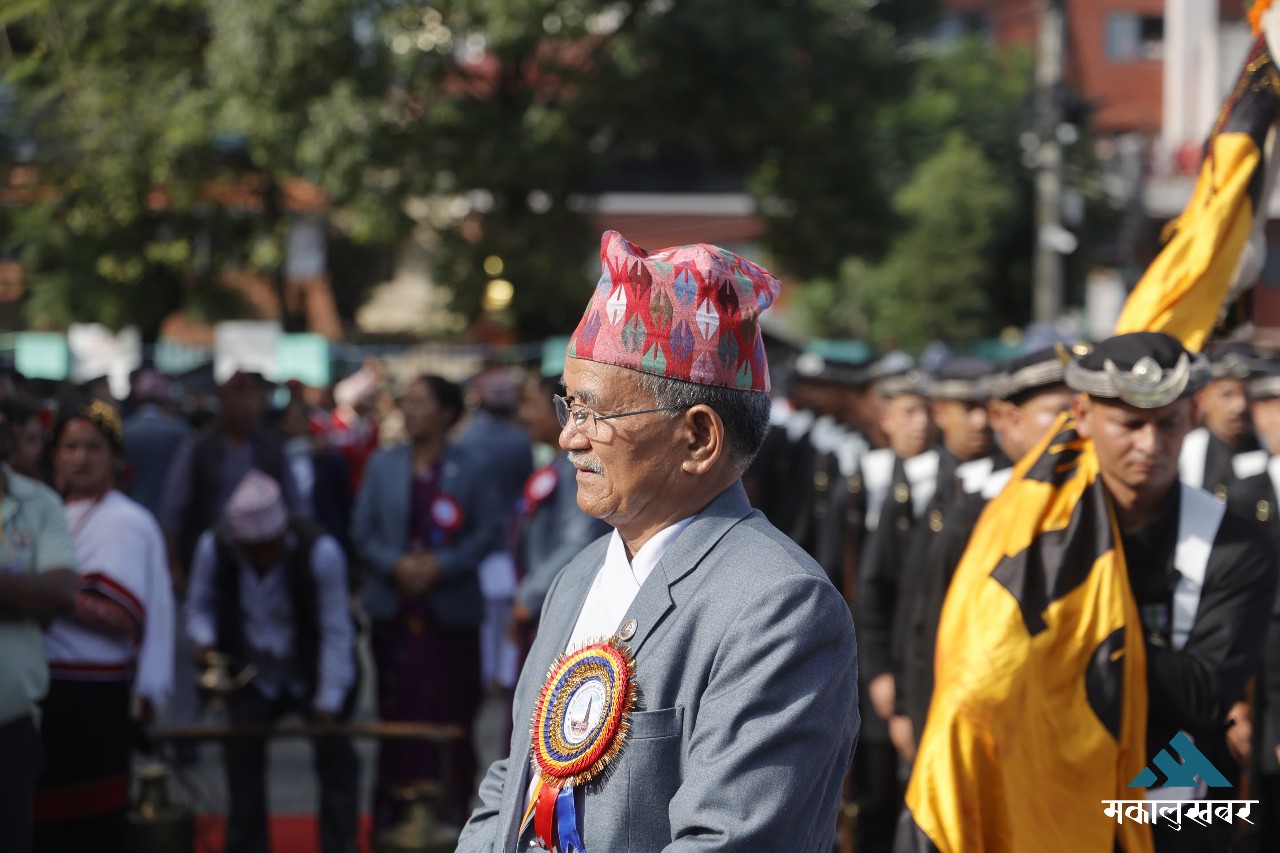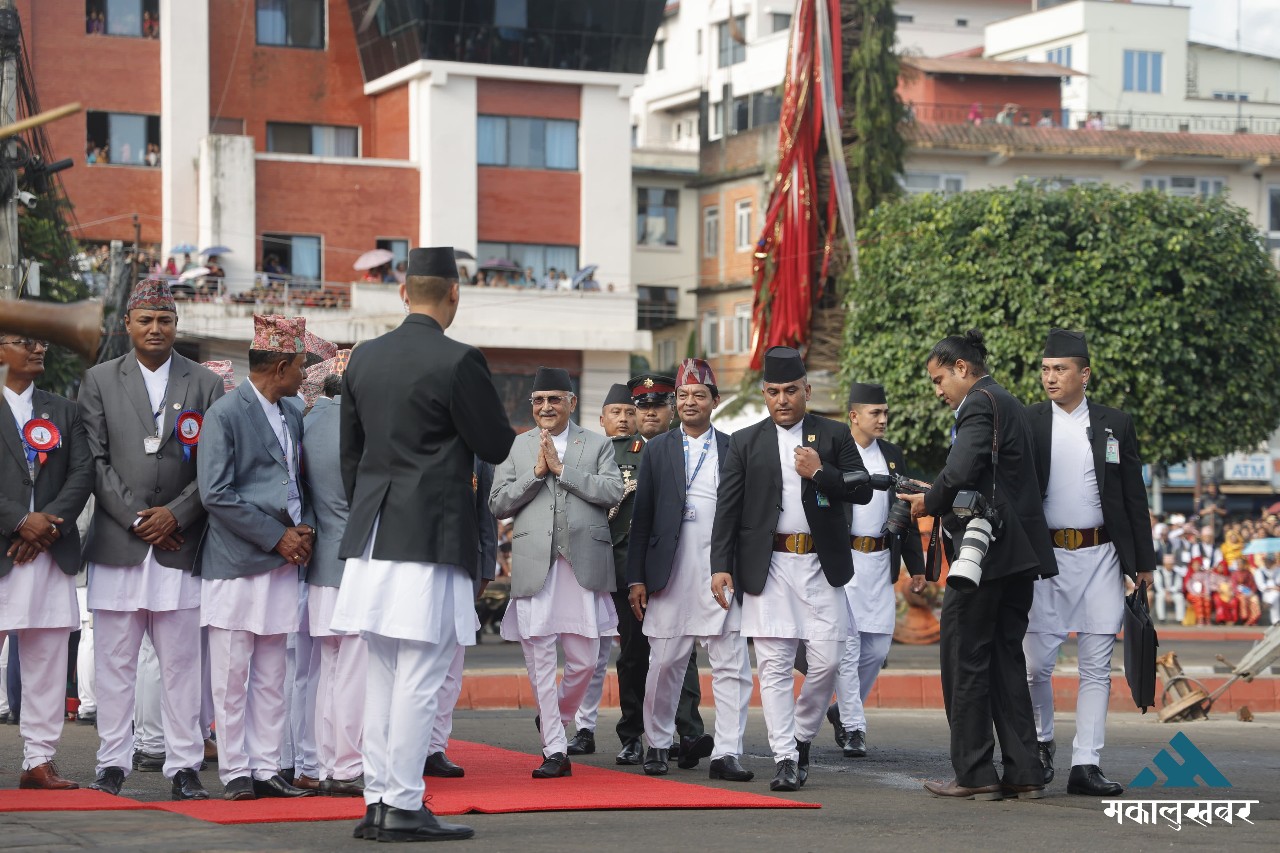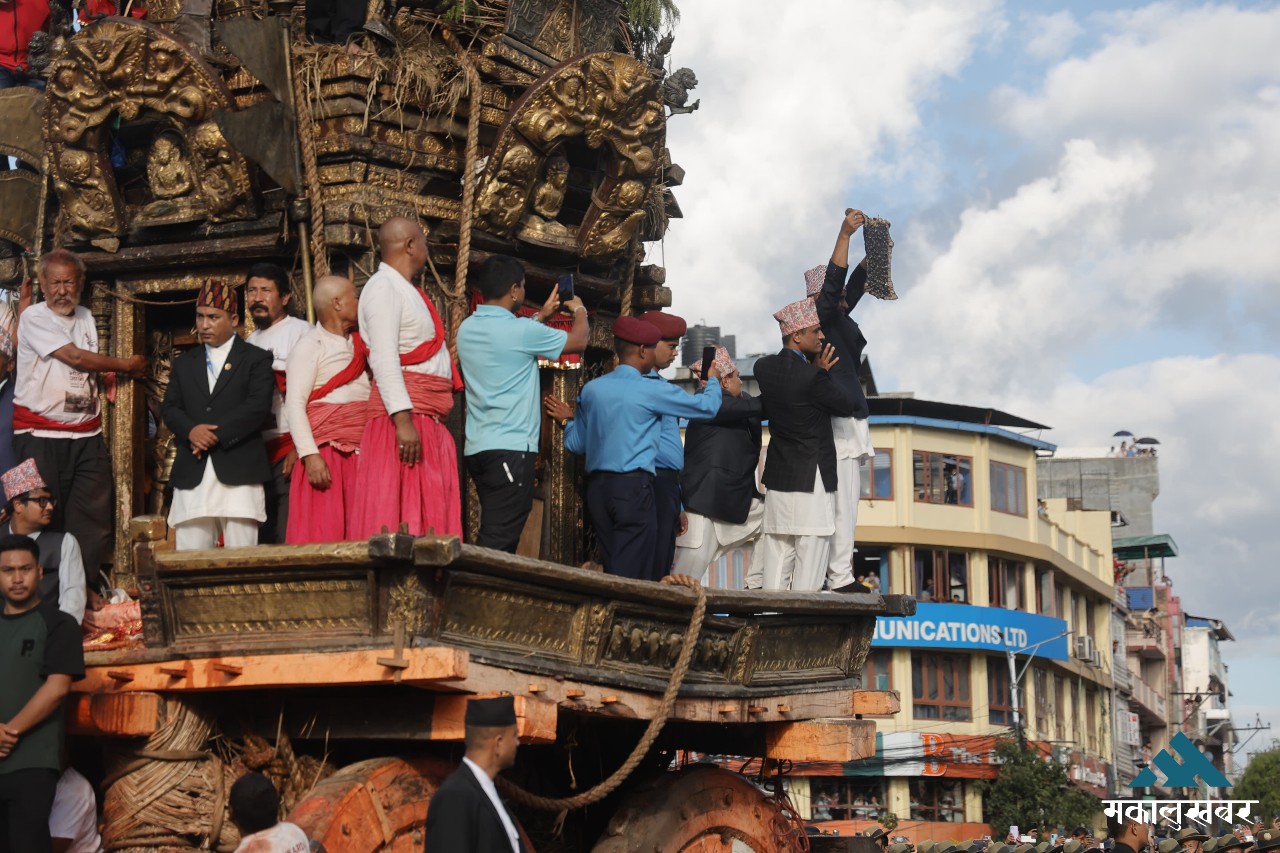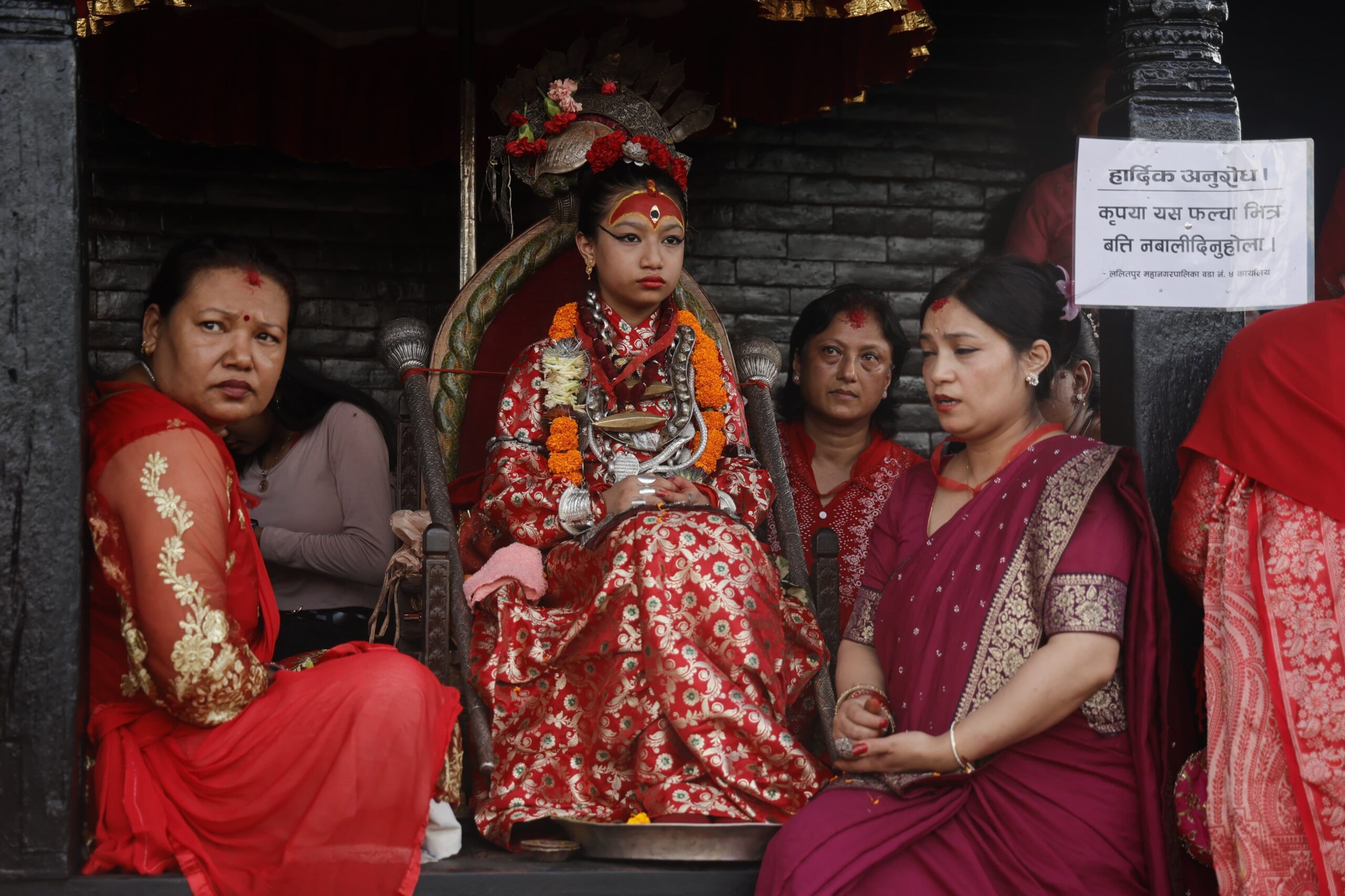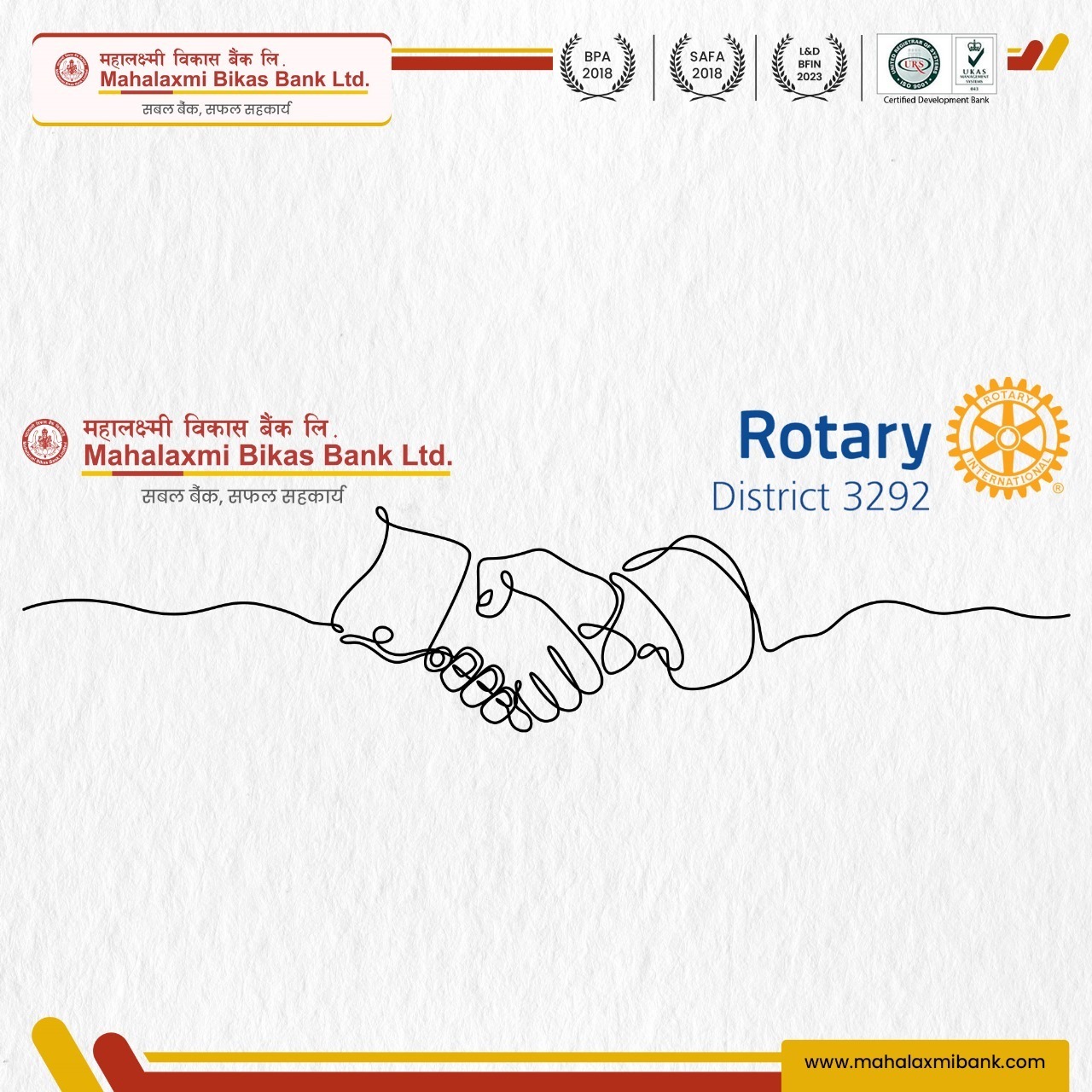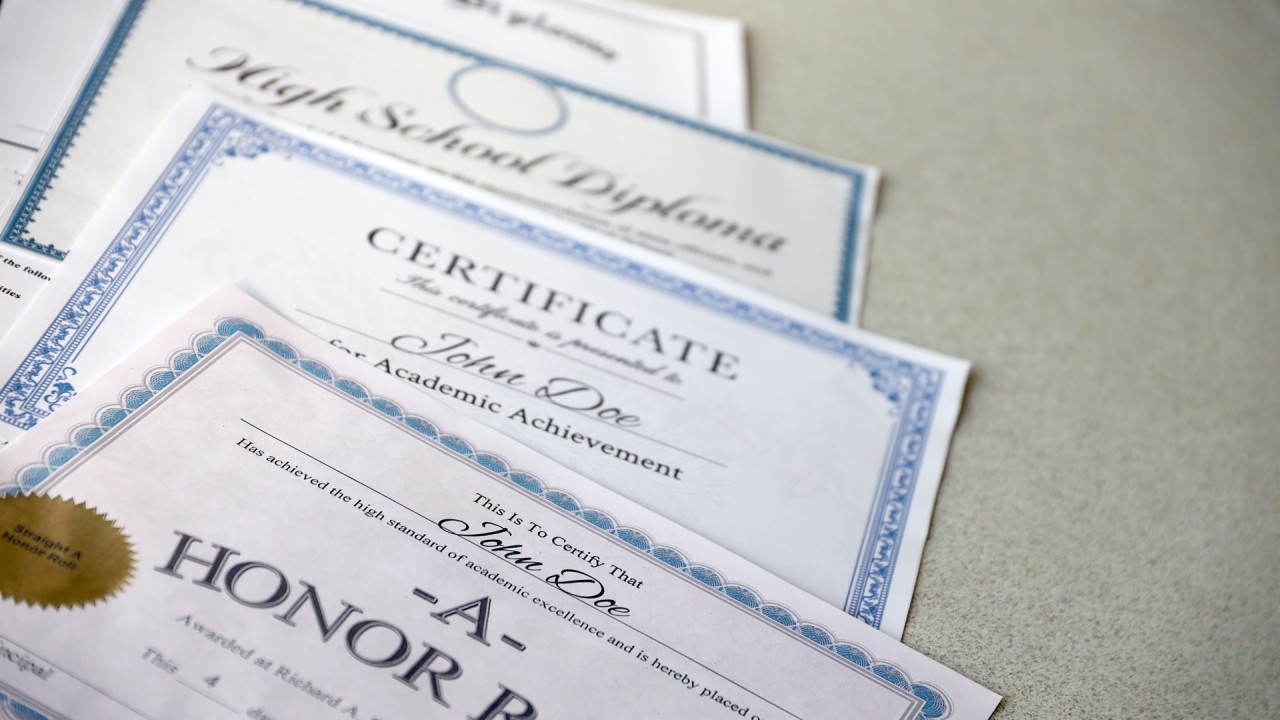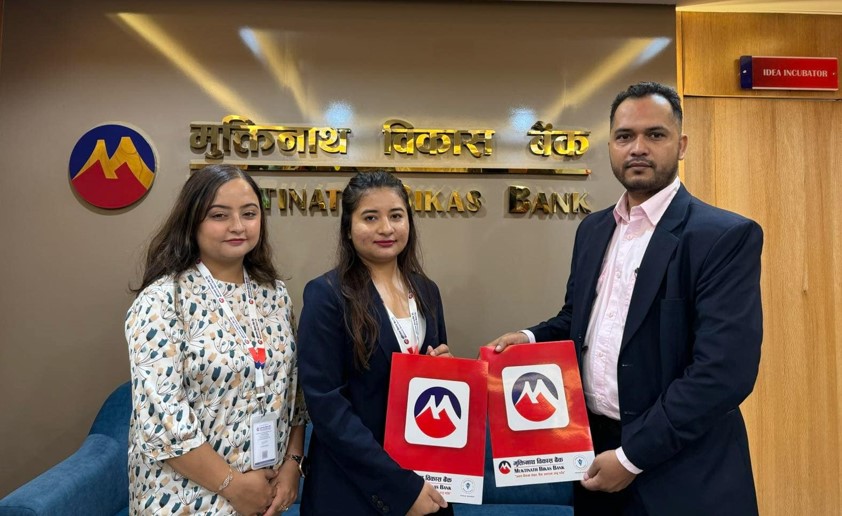Rato Matsyendranath’s Bhoto displayed (photos)
This traditional ceremony took place as part of the four-day celebration during which the deity's chariot is paraded.
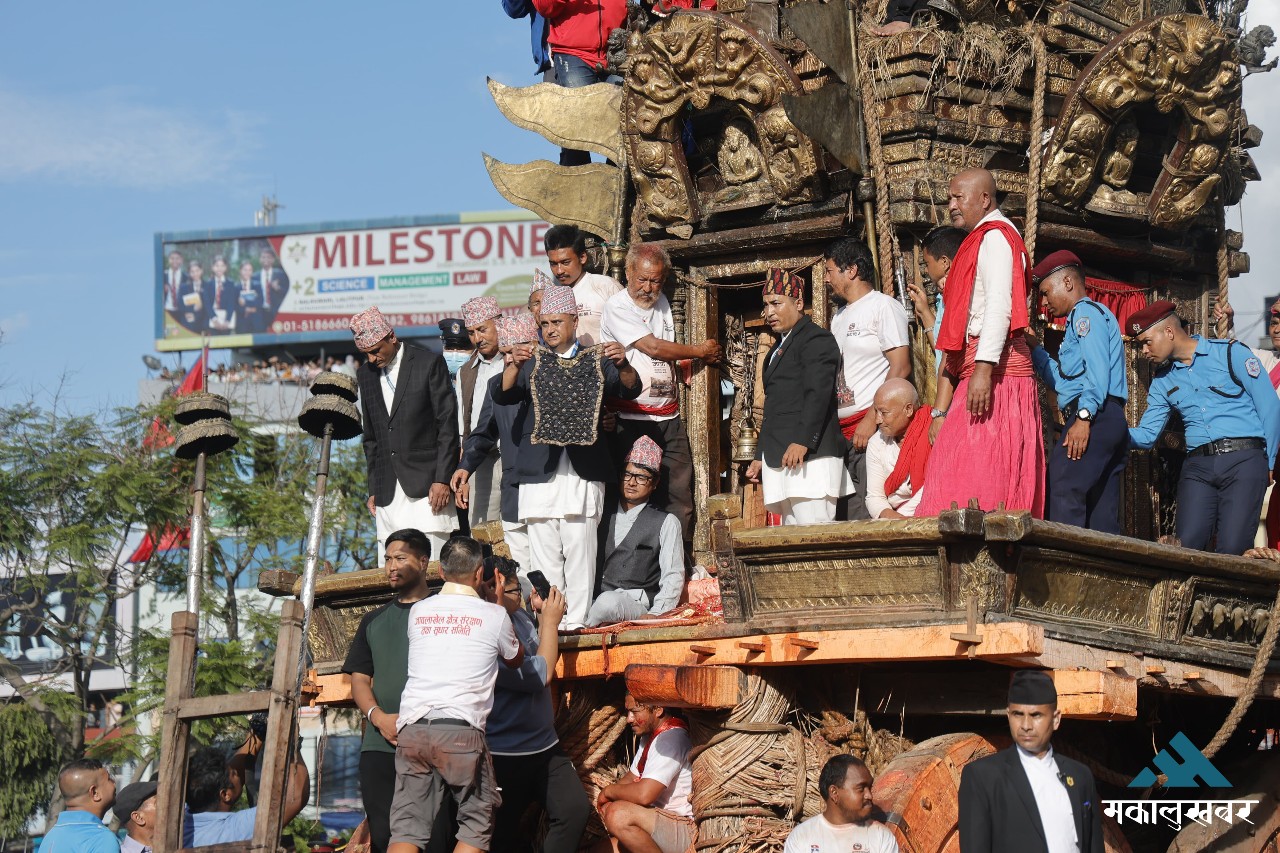
KATHMANDU: The final day of the Rato Matsyendranath Jatra was marked by the display of the sacred Bhoto (vest) in Jawalakhhel, Lalitpur on Sunday.
This traditional ceremony took place as part of the four-day celebration during which the deity’s chariot is paraded.
President Ramchandra Paudel was present at the event, where he, along with Vice President Ram Sahaya Prasad Yadav and Prime Minister KP Sharma Oli, observed the Bhoto.
The tradition of displaying the Bhoto, believed to date back to the Lichchhavi period, is a key highlight of the festival
The Bhoto, which is kept in a cloth bag and adorned with precious jewels, was showcased to the public in Jawalakhhel.
The event saw a large turnout of local residents who gathered to view the sacred object. Representatives from the Guthi Sansthan were responsible for the display of the Bhoto.
During the occasion, President Paudel and other high-ranking officials received tika and prasad as part of the rituals.
Story of Bhoto Jatra
A pair of snakes dwelt in Toudah, Kathmandu Valley, according to mythology. The couple in question was the King of Nagas, Karkataka Naga.
Nagini’s eyes became infected. While looking for a specialist to heal Nagini’s eyes, the king discovered that there was a knowledgeable Jyapu doctor in Bhaktapur. Karkotak Naga went in search of Jyapu Vaidya. Naga inquired about Nagini’s eye pain with Jyapu.
Jyapu Vaidya granted the snake’s request, and both of them arrived in Toudah.
Vaidya prepared an ointment and applied it to Nagini’s eyes. Nagini’s eyes had been cured. Naga-Nagini was overjoyed and lavished Jyapu Vaidya with gifts. A sparkling Bhoto with various stones was also among the gifts.
Jyapu Vaidya used to accompany that Bhoto on his walks. Ghost became greedy after seeing Jyapu’s Bhoto. When Jyapu removed Bhoto and began digging the field, the ghost stole it and carried it away. The Vaidya tried to chase the ghost, but failed as the ghost was too quick and cleaver for the farmer who had all but given up.
Previously, the only custom in Patan was to pull Matsyendranath’s chariot. The valley people and ghosts came to observe Matsyendranath’s chariot being drawn and brought to Jawalakhel at this time. Jyapu went to see if the ghost who had stolen the Bhoto would also attend the celebration.
Needless to say, Ghost had arrived to the fair dressed in a flashy Bhoto. That ghost used to appear and then vanish. Vaidya suddenly grasped the ghost’s arm from behind. He requested his Bhoto from the ghost. The ghost disagreed. The two got into a heated argument. King Guna Kamadev also visited Matsyendranath and the Jatra. After a heated argument, the king’s bodyguard forced them to appear before the king.
‘Maharaj, he stole the Bhoto that Karkataka Naga gave to me,’ Vaidya told the king. The ghost revealed to the king what he had discovered in the cornfield. Guna Kamadev, a pious and holy ruler, is said to have asked the priest of Matsyendranath to retain the Bhoto until a decision was made.
Jyapu Vaidya arrived at the Toudah coast and met Karkataka Naga as proof. Naga stated that he, too, would assume the human form and dress in white to observe the Matsyendranath Jatra. ‘When I arrive, the storm will be raging. “I’ll also appear taller than others,” Karkatak Naga said.
It has been three days since Matsyendranath’s chariot arrived in Jawalakhel. Jyapu arrived at Jawalakhel early in the hopes of obtaining Bhoto. King Guna Kamadev also attended. For a long, the wind blew, but Vaidya couldn’t figure out who was taller than the others. The monarch commanded that the four sides of the Matsyendranath chariot demonstrate whose Bhoto it was, but the belief that no one stepped up with witness evidence to take that Bhoto continues in Nepal.
Thus, the tradition of displaying the Bhoto in the presence of country leaders on the fourth day of Rato Machindranath’s Jatra has remained to this day.
This is the reason why the bhoto is shown on the last day of Rato Machhindranath Jatra to the public in presence of Patan’s Kumari and the President, the head of state (previously it used to be the King before abolition of monarchy system in Nepal) in a hope that the owner will come forward with the evidence to claim it.
Photos:
